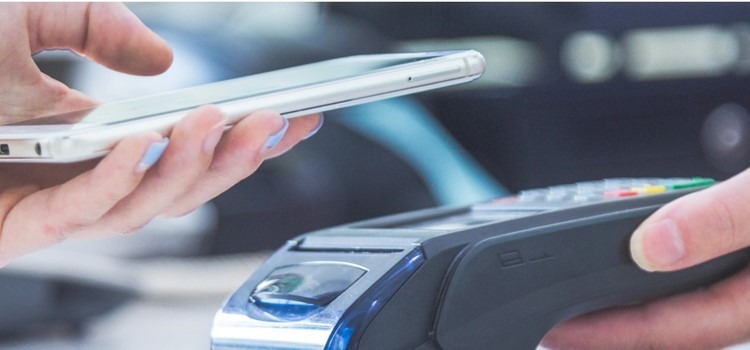The rapid evolution of financial technology is bringing about a new wave of innovations in the field of plastic money. These innovations are not only reshaping how we conduct transactions but are also paving the way for more sustainable practices within the financial sector. As consumers become more environmentally conscious, they are increasingly seeking options that align with their values, leading to a surge in demand for sustainable solutions in everyday transactions.
Anúncios
In the United States, this burgeoning demand is being met through significant advancements in the realm of eco-friendly plastic. Financial institutions and card manufacturers are exploring new materials that reduce environmental impact, such as bio-plastics made from renewable resources and recycled materials that diminish the reliance on virgin plastic production.
This blog post delves into the future of eco-conscious banking and how the industry is adapting to meet consumer needs, highlighting innovative approaches and collaborations that are driving the shift towards greener alternatives in banking products and services. With growing pressure from both regulators and the public, the transition towards more sustainable practices in the financial sector is not just a trend but a necessary evolution.
Anúncios
Adapting to consumer demands

The rise in environmental awareness has led to a significant shift in consumer behavior. Today, more people are looking for ways to reduce their carbon footprint, and this extends to their financial choices as well. Green banking is gaining momentum, with eco-friendly banking options becoming increasingly popular.
Major banks and financial institutions are recognizing this trend and are evolving to offer more sustainable choices. Whether through carbon offsetting projects, biodegradable materials, or reduced plastic usage, these institutions are finding various ways to meet consumer demands.
Not only does this appeal to current customers, but it also attracts a new generation of environmentally conscious individuals. Hence, the shift toward sustainability is not just a trend; it’s becoming a necessity for staying relevant in the competitive market.
Material innovation
One of the primary areas of development in green finance is material innovation. Traditional pieces of plastic are slowly being replaced by those made from more sustainable materials. Companies are experimenting with biodegradable plastics, recycled ocean waste, and even materials like wood.
These innovations not only reduce the environmental impact but also help in creating a closed-loop system where materials can be reused. Material innovation goes beyond just the physical card. Digital offerings are becoming more refined, reducing the need for physical mediums altogether.
Virtual cards and mobile wallets are becoming standard features, providing consumers with convenient and sustainable options. The coming years will likely see an expanded focus on both the material composition of physical cards and the development of more advanced digital alternatives.
Partnerships and collaborations
Collaboration between banks, tech companies, and environmental organizations is driving significant advances in eco-friendly banking. These partnerships aim to create comprehensive solutions that address multiple facets of sustainability. For example, some financial institutions are partnering with environmental NGOs to ensure that their sustainability claims are legitimate and effective.
Such partnerships result in initiatives like tree-planting programs, clean energy projects, and community-driven recycling efforts. These combined efforts not only contribute to environmental conservation but also elevate the brand’s reputation.
By making sustainability a core part of their mission, companies can foster stronger relationships with their customer base and build trust in a market that’s becoming increasingly skeptical of greenwashing tactics.
Blockchain for transparency
Blockchain’s immutable ledger system provides a reliable way to track the entire lifecycle of sustainable financial products. This technology can document every step, from raw material sourcing to final production, ensuring that every part of the process is environmentally responsible. This level of transparency is crucial for maintaining consumer trust and meeting regulatory requirements.
In addition to material tracking, blockchain can be used to manage and verify carbon credits. By providing a transparent record of carbon transactions, companies can credibly account for their environmental impact. This ensures that offset projects are truly effective and verifiable, helping to combat the growing concerns about the authenticity of such initiatives.
AI for operational efficiency
Artificial Intelligence offers numerous ways to enhance operational efficiency and sustainability in the banking sector. AI can help in optimizing data centers, reducing energy consumption, and managing resources more effectively. Predictive analytics can anticipate consumer needs, reducing waste and excess production.
Furthermore, AI can help in creating personalized financial products that cater to the individual sustainability goals of consumers. By analyzing behavioral patterns, AI can develop tailored solutions that encourage environmentally friendly spending and saving habits. These innovations are paving the way for a future where eco-conscious financial choices are seamlessly integrated into everyday life.
Consumer education and awareness
While technological and material advances are crucial, consumer education remains a vital component of promoting sustainable banking. Financial institutions have a responsibility to educate their customers about the environmental impact of their choices and the benefits of opting for greener alternatives. This can be done through campaigns, workshops, and informational resources.
Educated consumers are more likely to make decisions that align with their environmental values, thereby driving demand for sustainable alternatives. Financial institutions can leverage their platforms to raise awareness and encourage responsible behaviors. The more consumers understand the impact of their financial habits, the more they can contribute to a sustainable future.
Educational resources
Providing readily accessible educational resources can further promote sustainable banking practices. E-books, guides, and interactive online courses can help consumers navigate the complexities of eco-friendly banking. Financial institutions can host webinars and Q&A sessions to address common questions and provide personalized advice.
Additionally, integrating sustainability modules into financial literacy programs can pave the way for a more eco-conscious future generation. Schools and colleges can collaborate with financial institutions to incorporate these modules into their curricula. By making sustainability a fundamental component of financial education, we can instill environmentally responsible habits from a young age.
The future of sustainable financial solutions in the U.S. is promising, driven by consumer demand, material innovation, technological advancements, and effective consumer education. As companies continue to adapt and innovate, the U.S. market is set to become a leader in eco-conscious financial solutions. By embracing these changes, consumers and institutions alike can contribute to a more sustainable and environmentally friendly future.

